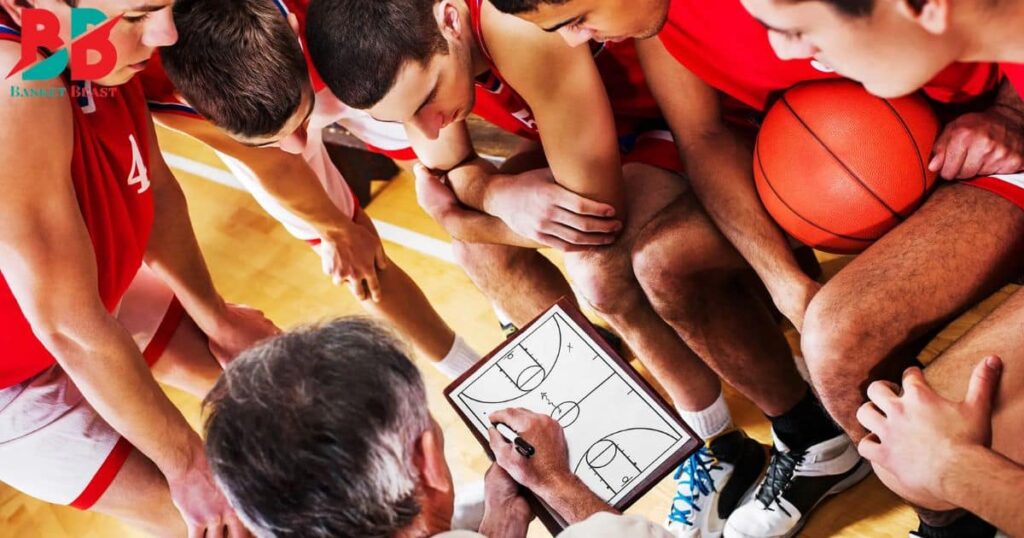The Tournament of Legends (TOL) has rapidly become the most prestigious middle school basketball event in the country. Started in 2017 by the National Youth Basketball Alliance, the TOL gathers top 7th and 8th grade club teams and players from elite AAU programs across America. It provides a platform for the nation’s best young talents to compete head-to-head in a 64-team championship tournament.
Pool play leads to intense bracket rounds culminating in a title winner. TOL also features associated All-Star contests. For skilled youth athletes, an impressive showing at this premier national event can be a springboard moment, gaining exposure and experience against elite peers while college and NBA scouts evaluate prospects. From its origins to its significance in gameplay, we explore every facet to ensure you gain a comprehensive understanding.
Basketball Fouls Limit: What’s the Allowance?
One of the most crucial concepts in basketball rules and gameplay is the limit on personal and team fouls that players are allowed per game before facing consequences. Understanding the specifics of basketball’s foul allowance system is important for players, coaches, and fans alike.
In basketball, players are permitted a certain number of personal fouls in a game before special conditions come into effect. The allowance depends on the level and organization:
- NBA – 6 personal fouls permitted. At 6 fouls, the player is disqualified.
- NCAA – 5 personal fouls permitted. 5 fouls results in player disqualification.
- High School – 5 personal fouls permitted before disqualification.
Moreover, after a certain number of team fouls over the course of a game, the opposing team starts shooting free throws on subsequent fouls:
- NBA – After 4 team fouls, inbound fouls result in free throws.
- NCAA – Once 7 team fouls occur, the bonus rule goes into effect.
- High School – Varies by state, but team foul totals from 6 to 9 begin bonus free throw situations.
So while the personal foul allowance causes individual players to foul out, the team foul threshold brings free throw shooting into play as a further consequence of overly aggressive defensive play. Knowing the precise foul limits and penalties are essential for players and coaches when gameplanning.
Consequences of Team Fouls in Basketball
While personal fouls affect individual players, team fouls lead to important consequences for the opposing team’s advantage. Understanding these implications allows teams to strategize around team foul situations both offensively and defensively.
The main ramification of accumulating team fouls is the triggering of free throw opportunities for the other team. In the NBA, after 4 total team fouls, any defensive foul on an inbounds play results in free throws for the opponents. At this stage teams must defend cautiously around the inbounder.
In college basketball, once a team commits 7 fouls the bonus rule comes into effect. Now, any non-shooting defensive foul causes the opponents to shoot bonus free throws. Strategically, teams will drive to the basket more often, baiting these bonus chances. On defense, avoiding silly reach-in and body fouls becomes vital.
Finally, in the double bonus, applied after 10 team fouls, any defensive foul at all leads to free throws. Here, defenses must play flawlessly clean without reaching or body contact that could give away points at the line. Meanwhile, smart offenses penetrate inside constantly to draw easy fouls and double bonus free throwing opportunities.
The escalating team foul tally requires adjustment by both coaches and players when considering their defensive aggression and offensive attack plans. Outsmarting the bonus by getting to the line while not giving away too many freebies through unnecessary fouls is key.
Game Impact of Team Personal and Technical Fouls
In addition to standard personal fouls, technical fouls against a team can carry even more severe and immediate consequences that dramatically affect the game.
Technical fouls result from unsportsmanlike conduct by players, coaches, or the team generally. These can be for behavior like arguing with refs or taunting opponents. When a referee charges a technical foul, the opponent immediately shoots two free throws, plus retains possession afterwards.
So a single technical foul against a team gifts the opposition team two quick free points plus continued offense. This swing of events can be crushing – blowing what was just a small lead or erasing momentum. Especially in a close game, technicals can decide outcomes.
Even more impactful is if a team accumulates too many technicals. In college and high school, after the third technical foul against one team, the game is immediately ended and that team forfeits.
Strategies to Prevent Reaching the Team Personal Foul Limit

Reaching the penalty team foul limit too early can make games much tougher to win. Smart coaches and players use various strategies to avoid accumulating costly team fouls.
Emphasize Sound Fundamental Defense
The most important focus is playing sound fundamental defense without being overly aggressive. Defenders must move their feet and defend legally with verticality, without lunging or swiping for steals. Drills reinforce proper stance technique.
Gameplan to Defend Without Fouling in Bonus
Many coaches specifically gameplan to defend without fouling once in the bonus. This may involve more zone defense looks and calculated risks to allow contested shots but greatly reduce whistle potential.
Rotate Bench Players
Rotating bench players is another tactic to prevent escalating fouls. Subbing in reserves when core players are at three or four fouls enables a fresh approach while resting potential foul-trouble candidates.
Push the Pace on Offense
On offense, purposefully pushing pace, attacking in transition, and generally playing more uptempo can mean fewer halfcourt plays and therefore fewer chances for officials to call dubious touch fouls. Imposing a faster aggressive style minimizes ref impact on the game.
Eliminate Complaints About Calls
Finally, coaches firmly tell players to eliminate complaints about calls. Demonstrative reactions often induce retaliatory technical fouls from refs which exacerbate issues. Staying poised when adversity hits is vital.
With intentional and smart play, teams can avoid the considerable downside of reaching the foul limit too soon, maintaining their competitive chances.
In the NBA after exceeding a certain technical tally, suspensions get applied. But regardless, both personal and technical team fouls bring major consequences that can sink a team’s chances if they aren’t careful and disciplined. Coaches drill into players the importance of smart, clean play for just this reason – to avoid early bonus situations or technical fouls from swaying the game result the wrong way.
Outcomes of Player Technical Fouls in Basketball
Beyond standard personal fouls, player technical fouls bring their own host of penalties that can shift a game’s dynamics. Understanding the ramifications of technicals is key for players looking to avoid hurting their team.
The first outcome of a technical foul is that the opposing team is awarded two free throw attempts, along with retention of the ball afterwards. So a technical gifts four quick points if the free throws are made – a crushing swing.
Technicals also accumulate on player’s tally for the season. After a certain number, defined by the league, suspensions get handed down, forcing the player to miss games. Too many techs causes a label as a hot-head which coaches dislike.
Additionally, some technical fouls come with their own immediate one-game suspension as well depending on severity. Ejections for fighting, threatening refs with physical contact, or dangerous flagrant fouls lead to automatic bans.
Beyond game consequences, bad reputations through techs can hurt players’ prospects. Referees may perceive them as troublemakers and swallow their whistles on future legitimate calls. Techs also raise red flags to recruiters and coaches assessing character.
With so much on the line from technical fouls then, players must keep composure, avoid confrontations, and eliminate demonstrations that could trigger the official’s whistle. Staying disciplined when emotions run high pays dividends in the long and short term.
What does Tol mean in the Volleyball Scoreboard?
Seeing a “Tol” on a volleyball scoreboard can be confusing for players and fans unfamiliar with what it signifies. Specifically, Tol stands for a timeout logged by one of the teams.
Official Scoring Terminology
Tol represents the official scoring terminology for a timeout taken in volleyball matches. It notes that a team has used one of their allotted timeouts, stopping play briefly.
Limited Timeouts Per Set
Volleyball rules grant each team a small number of timeouts that can be requested per set. Common allowances are 1 or 2 timeouts per team per set at various levels of play.
Strategic Use of Timeouts
Coaches strategically call these timeouts to halt momentum, adjust their player rotations, or devise new tactical plans based on what they are seeing from the opponents. Managing timeouts effectively at key moments can influence the set outcome.
What does TP mean in Basketball?
TP is a common abbreviation used in basketball to denote a three-point field goal made. When players connect on shot attempts taken outside the three-point arc which appears on basketball courts, the made baskets count for three points instead of the normal two points. These successfully converted three-point shot attempts then get marked down in scoring summaries and box scores as “TP” rather than just plain FG for standard field goals.
So TP allows for an easy visual differentiation in basketball statistics between normal field goals and those higher-value shots scored from beyond the three-point line. It rewards players and teams which excel specifically at three-point shooting accuracy, an increasingly critical skill in modern basketball strategy with the rising prominence of perimeter-oriented players and lineups containing multiple long-distance scoring threats spreading the floor.
The TP abbreviation has now become ubiquitous in basketball at all levels as three-point shooting continues growing ever more important and new generations of players practice launching shots from behind the deeper TP-counting arc.
What does FLS mean in Basketball?

FLS is an abbreviation commonly used in basketball statistics and scoresheets to denote “Free Throws Made” and “Free Throws Attempted”. For example, a player with a statline containing “8 FLS – 10 FLA” shot ten free throws during the game, making eight of them. This succinct FLS acronym for tracking free throw efficiency. It provides valuable insight into an individual player’s shooting touch from the foul line plus.
It also provides an indicator of how often a player is getting fouled or earning trips to the line. For young players especially, improving free throw conversion percentages based on their FLS numbers compared to total FLA chances is often a point of emphasis.
Frequently Asked Questions
What is a tol in soccer?
Tol does not have any official meaning in the sport of soccer.
What does tol mean in American football?
Tol does not have an official meaning in terminology used in the sport of American football.
What is the full form of TOL?
TOL stands for “Tournament of Legends”, which is a prestigious national championship event for top middle school basketball club teams and players.
What is the meaning of Tol?
In basketball context, TOL refers to the Tournament of Legends annual middle school basketball tournament. Outside of basketball, tol does not have a commonly used meaning.
Conclusion
The Tournament of Legends (TOL) has quickly grown into the most prestigious middle school basketball event in America. It gathers elite 7th and 8th grade club teams from top youth athletic programs across the country for a massive championship tournament held over multiple days.
Pool play filters down to intense elimination bracket rounds featuring the nation’s premier young talents, with the TOL title representing a crowning youth basketball achievement. Standout performers often leverage TOL success to boost their profiles entering high school and catch the attention of recruiters. For the best middle school players, the TOL provides high-stakes competition and exposure, college scouting opportunities, confidence-building, and lifelong memories against equally skilled peers chasing basketball glory.



